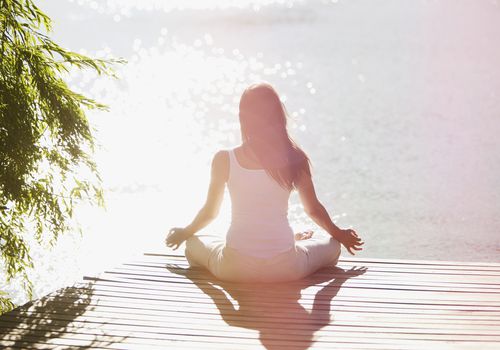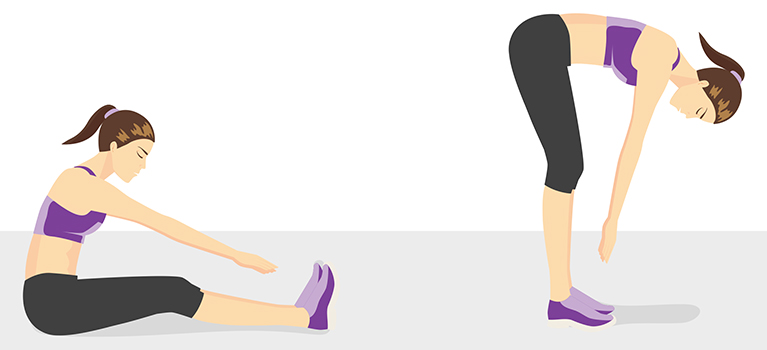
Yoga RA (or yoga as it is also known) is an ancient form that uses saunas to improve your body's health. To help achieve balance and overall well-being, all methods can be used in a class. While this practice can be very beneficial, there are some methods that may not be suitable for people with joint pain. This article will discuss the teaching methods and benefits of yoga ra. It also includes a cost comparison of the various styles of yoga ra.
Benefits
Recent research examined the benefits that yoga has on RA patients. The results of the study revealed that yoga helped reduce symptoms, improve function and reduce inflammatory cytokines. This study suggests that yoga may improve overall health and help prevent the onset or progression of RA. These benefits need to be confirmed with further research. People with RA should consider yoga as an option.
Yoga can be used to reduce stiffness and pain in RA. It can help people with RA to cope emotionally. Yoga can be beneficial for RA. But what exactly does yoga do for RA patients? Here are some of the key benefits:

Methods
Yoga ra may be able to offer a non-pharmacologic treatment of rheumatoidarthritis (RA), a common inflammatory autoimmune disorder. Multiple outcomes were used to evaluate yoga for RA patients, including pain, disease activity and grip strength. To calculate the standardized mean differences between the yoga- and control groups, outcome measures were standardized. Ten trials with 840 patients were included in the study.
The researchers evaluated the effects of a 16-week YT intervention on RA patients. Participants experienced an improvement in function and a better quality of their lives. In addition, the study showed that participants were more likely to adhere to YT practices. The promising benefits of YT for RA are still being evaluated. However, more research is necessary to confirm these claims. It appears that yoga can be used as an adjunct therapy to RA patients. Yoga techniques can be a useful tool for improving quality of life and enhancing self-care behaviours.
Teaching techniques
Iyengar Yoga is known for its emphasis in precise anatomical alignment, specific therapeutic sequences for patient groups, and rigorous teacher education. It has been shown to be highly effective in rehabilitation. This includes the treatment of physical and psychosocial functioning. Certification of IY teachers is necessary to ensure their effectiveness. This training covers anatomy, physiology, and yoga philosophy. Participants must pass a series of exams during the training course.
When teaching yoga, it is important to be able to communicate clearly. It is important to communicate clearly with your students. You can practice your speech by speaking with your friends, family, and coworkers. Eventually, this will become second nature to you. In the meantime, practice your teaching skills to help improve your communication and interpersonal skills. Here are some teaching techniques for yoga-ra.

Cost
Yoga RA's cost can vary greatly depending on the type and level of franchise opportunity. Ra Yoga franchise opportunities can be very affordable. Others are more costly. No matter what the cost, a profitable business should be able to ramp up quickly with a break-even period of around two years. Ask five to six franchisees for their opinions on the cost of starting Ra Yoga franchises. This will give you an idea of how long it takes to break even and how much money your new business can bring in.
In addition to a variety of yoga classes, Ra Yoga also offers workshops and healthy lifestyle events. For a low amount, new clients will receive a week's free unlimited yoga classes. Ra Yoga also offers childcare for most morning classes. Your children don't even have to come to class. The heated facility has hypoallergenic radiant heating. Ra Yoga is not run by a larger company, but by a few local friends.
FAQ
How does yoga work?
Yoga is based upon alignment, breath control. Meditation and stillness principles. If done properly, yoga can bring peace and calm to the practitioner.
Your body should be warmed up before you begin any yoga class. You might begin with stretches such as forwarding bends (bending forward), reverse bends (bending backward), twists and side bends. These moves are great for loosening tight muscles and preparing you to do deeper poses.
Next comes "standing", which is a balancing position. You will be standing with your feet together, your arms at your sides, and your eyes down towards the floor. Your body should feel balanced, centered and grounded.
Next comes the most important part: moving into deep stretching poses. This is where you lay on your back and bend your knees. Next, move into deep stretching poses. To keep from falling, hold onto something sturdy. If you don’t own anything to grab, you can place your hands on the ground.
After completing all of these poses, you can move on to a series standing poses. These include the warrior pose (mountain pose), mountain pose, downward facing, upward facing, plank pose, last pose, and the warrior pose (warrior pose).
It is important to slow down and breathe deeply when you do yoga. Deep breathing can not only clean your lungs, but it also calms your mind. You can do this by focusing on your inhales and exhales. Consider counting every time you take a deep breath.
You can do yoga wherever you are, even while cooking. Just follow the same steps above, but sit upright instead of lying on the ground.
You can start with only 10 minutes per day if yoga is new to you. Don't forget that yoga can benefit anyone, no matter their age.
How long does it take for yoga to be effective?
Although yoga takes some time, you can always expect a great workout. It takes time for you to gain strength, flexibility, as well as endurance. You start slow and then gradually increase the intensity until you reach an optimal level.
The key is consistency. The more you practice, you will become better at it.
Can yoga be beneficial for people suffering from chronic diseases?
Yoga may be beneficial for people suffering from chronic diseases such as heart disease and diabetes by increasing their flexibility, improving fitness and reducing stress.
Yoga can also help with many other conditions such as arthritis, asthma and depression, fibromyalgia (high blood pressure), insomnia, fibromyalgia.
What is the difference in yoga and pilates?
Both pilates and yoga are great workout programs, but they have different methods. Both are based on stretching but yoga emphasizes poses that strengthen your core muscles.
Pilates emphasizes strengthening your core muscles, and improving your balance. It's important that you know that yoga can be used as a complement to pilates.
Statistics
- The people in the yoga group were 37 percent more likely to have quit smoking by the end of the 8-week program. (nccih.nih.gov)
- According to calorie estimates calculated at Harvard Medical School, the average 125-pound person burns about 120 calories in a half hour of hatha yoga, and a 185-pound person burns about 178 calories in that half hour. (everydayhealth.com)
- Gentle yoga has been shown to ease some of the discomforts of tender, swollen joints for people with arthritis, according to a Johns Hopkins review of 11 recent studies. (hopkinsmedicine.org)
- According to the Agency for Healthcare Research and Quality, falls are incredibly common among older adults in nursing facilities. Even the simplest ones can increase the risk of death (24). (healthline.com)
- Lock in 25% off your Founding Member rate. (corepoweryoga.com)
External Links
How To
What is the best location to practice yoga in?
There are many ways to practice yoga. Every person has their own style. The most important thing is to feel at ease in the positions you choose.
Here are some commonly used positions:
For beginners, standing poses are a good choice because you can see your body from various angles. They also make it easier to focus on breathing.
Forward bends- Forward bends can often be used to release tight areas. These can be done while you are sitting or lying down.
Backbends-Backbends are generally considered advanced poses. If you want to try one, you should seek advice from your instructor.
Inversions - Inversions are poses that require you to balance yourself upside down. This type is challenging, but rewarding.